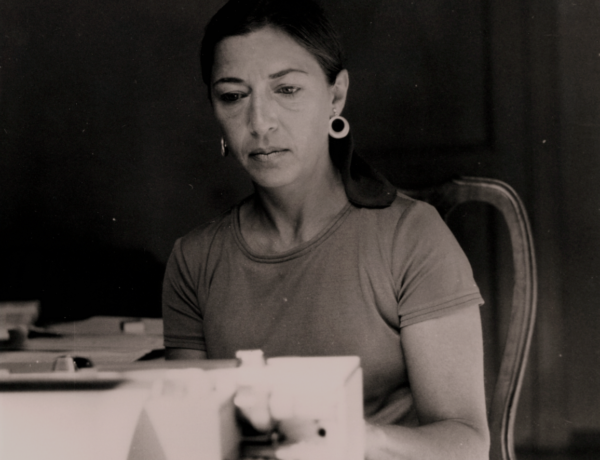Last Edited on November 10, 2023 by Sarah Pereira
EDIT (July 5th, 2022): Today AP Scores have come out and I got a five! I hope that reading this guide will help you become successful in the course and exam too!!
I want to preface this post and say, only take Advanced Placement Art History if it is something that you really love and are interested in pursuing in the future as an art/architecture/design major. Not only is it one of the hardest APs to take, it’s also one of the least common ones and if you’re not majoring in the subject, well, art history is pretty much useless. Unlike Advanced Placement English, which is useful because some colleges require you to take an English class as a Freshman and passing this exam allows you to skip it, Art History is rarely a mandated class (there’s a potential for it to be mandatory if you’re going the humanities route). One last thing to keep in mind: AP Art History is not a GPA booster, the collegeboard quizzes are pretty hard and the class requires a lot of your after school time.
One of the biggest tips I can give you before you read this is remember you will not be able to cram for this class! Art History is a class that you need to be learning gradually. And remember the curve is usually generous, with a 5 needing only a minimum of around a 71%.
Onto the tips that you must follow so you won’t be swimming in the 250 because it is definitely exhaustive and very comprehensive. Hopefully this will teach you how to properly study for AP Art history and help you get a five!

Constantly Practice the 250 Identifiers!
This is something I cannot stress enough. It might seem like memorizing 250 images, their names, dates, cultures, locations, and artists isn’t too much, but trust me, it is. It is very easy to forget identifiers from the beginning units because you are constantly learning new works. In order to finish the 250 before the exam and still have two weeks in school to review, you’ll be learning multiple new works everyday. In truth though, the MCQs have probably three identifier questions and the FRQs require two-three identifiers, but it’s better to be safe than sorry. Just be prepared enough because collegeboard only accepts a 50 year time period for the dates. And identifiers are only considered “complete” if you provide two identifiers beyond anything provided like the name.
To practice the Identifiers I’d recommend googling “AP Art History Identifier Quizlet.” Quizlet’s great for this because instead of using their flashcard feature, there’s a “Learn” feature that quizzes you on various ways to best keep up your retention of the works. I’d recommend doing reviews at least once a week. Constantly review EVERYTHING you’ve learned because it’s going to be much harder to relearn the identifiers of every work two weeks before the exam. You could also make physical flashcards if you think that would be more effective, though tedious. If I regretted one thing the most about AP Art History was trying to cram identifiers, putting myself in more stress than I should’ve because I didn’t constantly practice my identifiers.
Take Notes on ALL the Images
Do not think that because the majority of the exam is about Unit two, three, four, five that you don’t need to know the other six units. You 100% do! Both the Multiple Choice Questions (MCQs) and Free Response Questions (FRQs) will reference some sort of work in the other (shorter) units. The most effective way of taking notes is probably using a Google Slide or Powerpoint and taking notes and adding pictures and identifiers that correspond to this. A notebook would be okay too, although you’d probably need a notebook with more than 250 pages because there are many works that have multiple artifacts or sculptures within them that you need to know (some are even mentioned in MCQ questions). For example, Yaxchilan and the Lintels within it.
Set a Study Plan a Month Before the Exam
Since I started studying around two weeks before the Exam, I definitely wish I planned out my studying a month before, so that I could utilize my time to the fullest (especially spring break and the weekends). Bear one thing in mind when creating your study plan: most teachers will not stop teaching or exempt you from tests and quizzes because you have an AP test. If anything, you will continue to have tests and quizzes during the week, so using time wisely is crucial.
Find Reliable Study Recourses
The best ways to take notes other than the ones your teacher gives you are Smart History/Khan Academy. Khan Academy provides a great resources for people who don’t like reading from a textbook and would rather watch videos. Khan Academy also has question boxes where you may ask a question and get responses from Art Historians.
The Crash Course and Barron’s Book (what I personally used) provide tons of excellent context and content of the works. Often times, whatever you learn from your teacher about a work just scratches the surface. These books both go into a lot of depth, so if you find that you don’t know enough about the reasoning for a work’s creation, this is your best route. Personally, I wouldn’t recommend buying super expensive Art History textbooks unless you think you’re going to use them even after the AP exam. Often textbooks are convoluted and include too much detail for you to memorize (my textbook was almost 700 pages!). You’re just overall better off in buying practice/workbooks.
If you aren’t self-studying, Collegeboard has great videos and Progress checks per unit. Normally, I left space on my google slide for each work, so that when I took the progress check or a quiz I could add in more information because with APAH, there is never enough information. It’s also helpful because there’s a good chance that the people who make the Progress checks also make the exam!
Albert.io is another great resource that has quizzes per unit that are helpful for more practice. The Barron’s book also has three practice tests (MCQs and FRQs) and even more resources on their online website. In addition, if you’re looking for more detailed and harder practice tests, there’s Varsity Tutors. Warning though, usually their tests are a lot harder than the actually exam, so don’t worry if you’re scoring lower than you normally do!
The last resource that I found helpful is looking at past FRQs (CollegeBoard has all the old ones up on their website) and MCQs to get used to the test. I’ve also seen some people use the Annotated Mona Lisa and get 4s and 5s.
Memorize Form, Function, Content, Context about Each Work and the Visual Characteristics
Do not try cramming all this information before the exam. It won’t work. Know the format of the exam, what types of MCQs to expect and what type of FRQs. Oh, and, start practicing FRQs early so you know what the structure is like. Do practice exams before the test!! This is a mistake people I know did and you don’t want to be one of them. Just because you know the works doesn’t mean you know the test.
One of the best ways to learn the formatting of the test and what Collegeboard expects is by watching their annual YouTube reviews that start around April 18 and go on for two weeks. They’re approximately an hour long, but it’s super helpful for having additional information on the works and knowing what the FRQs entail and expect. If you have the chance, as well, try and stay either on par or ahead of the class because the minute you get behind on works, you will feel so stressed. Info-dump on the FRQs, they don’t take off points for things that are wrong.
That being said, AP Art History is a fun course! I’d also highly recommend reading the AP Art History Course and Exam Description. And don’t forget to get a good nights rest and eat a breakfast before the exam. Good luck!




No Comments